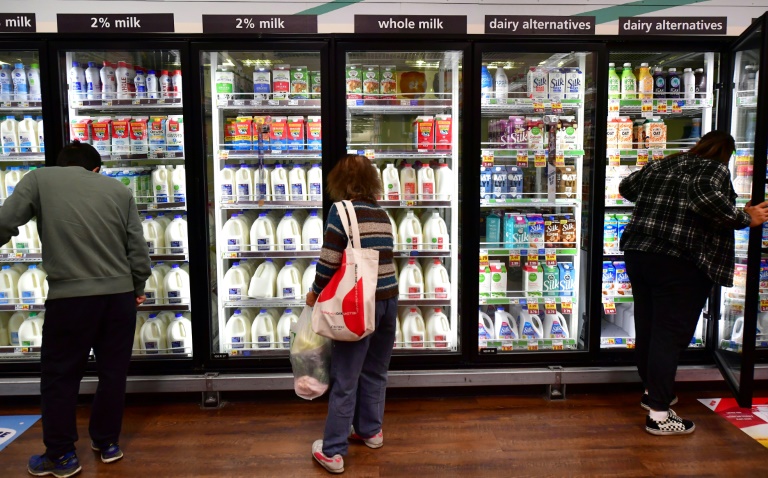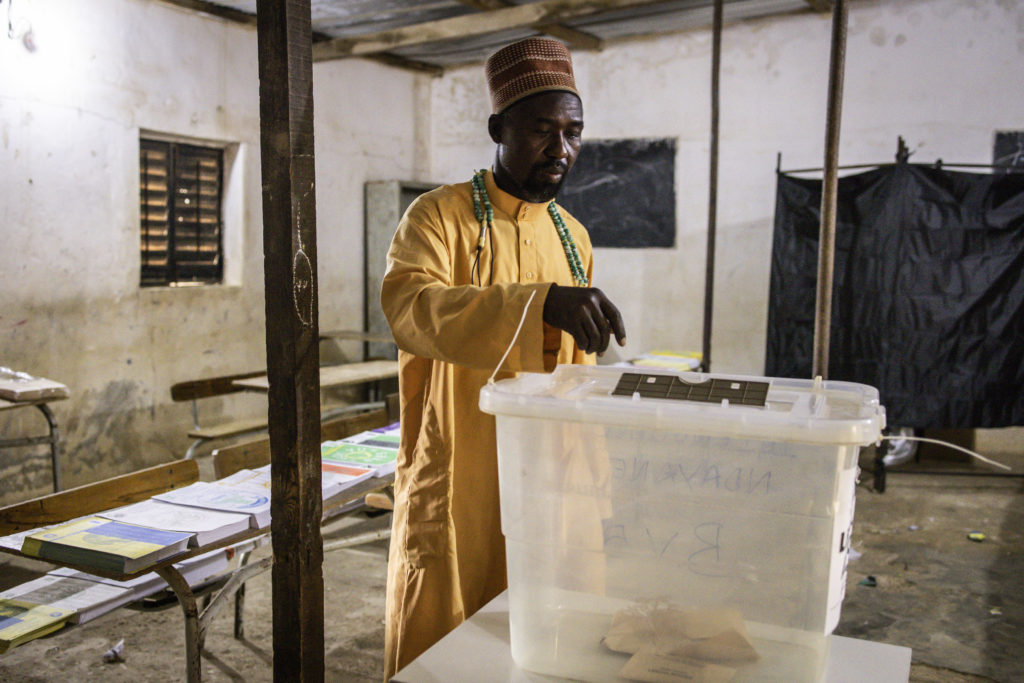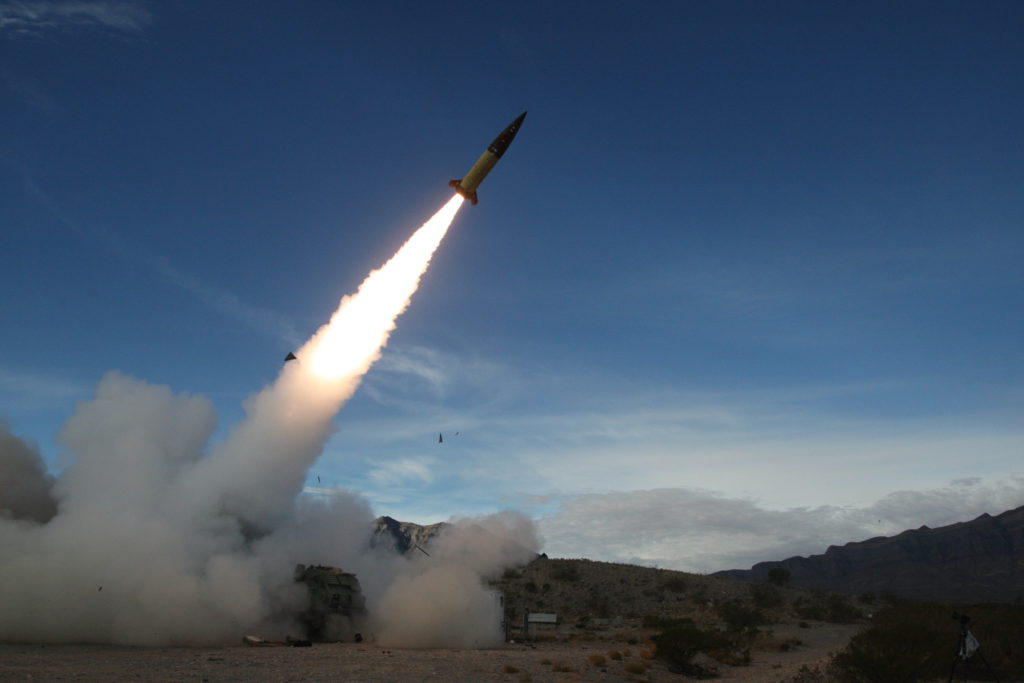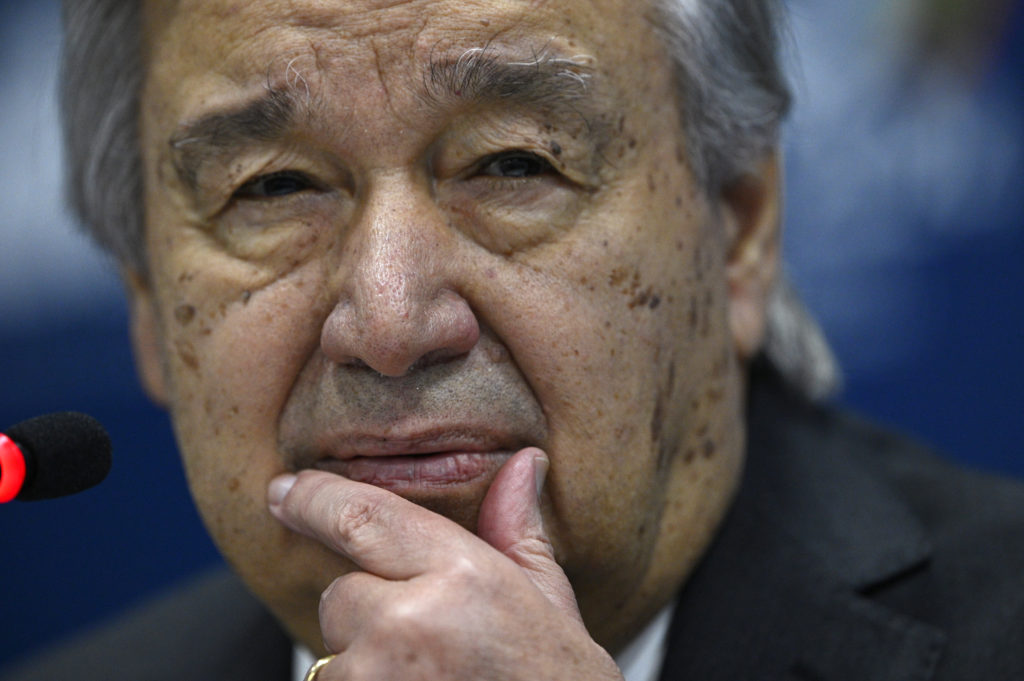US inflation slowed in April, according to new data released Wednesday, but Americans are still seeing their wallets empty faster than before when they buy groceries and pay rent.
President Joe Biden has gone on the offensive, blaming the price spike on Russian leader Vladimir Putin’s invasion of Ukraine, and announcing a series of steps he hopes will ease the pain.
The conflict and the sanctions imposed on Russia have driven up prices around the world for fuel, grain and fertilizer, raising costs for farmers who in turn are forced to raise prices.
Biden, whose popularity has taken a hit from the highest inflation in four decades, has labeled the recent surge “Putin’s price hike.”
While visiting a farm in Illinois on Wednesday, he laid out the White House strategy to help food producers, including boosting domestic fertilizer production to combat a nationwide shortage.
“My administration has been working to drive down the cost of farmers… and prices to consumers,” he told reporters.
That includes a $500 million federal investment in fertilizer production and working with the G7 to increase global fertilizer supplies, as well as to “prevent export restrictions on food and agricultural inputs, and bring more global production to market, which will stabilize prices.”
The latest inflation data offered some good news, as the consumer price index (CPI) slowed slightly last month, jumping 8.3 percent compared to April 2021, after peaking in March at 8.5 percent, according to a Labor Department report.
Biden called the slow-down “heartening” in a statement earlier Wednesday, but acknowledged inflation is still a major challenge, and said “bringing it down is my top economic priority.”
The dip was helped by easing energy costs, as gasoline fell 6.1 percent in April compared to March after an 18.3 percent surge in the previous month.
But gasoline prices at the pump hit a new record on Tuesday, so the news from April may be of little comfort to drivers.
Biden noted during his speech that to offset this, he had signed an emergency waiver last month to allow the nationwide sale of e-15 gasoline — a blend of ethanol and gasoline — during the summer, when fuel sales tend to go up as more Americans travel for vacation.
Prices continued to rise last month for a range of goods, including housing, groceries, airline fares and new vehicles, and annual inflation remains at its highest rate since early 1982.
– Groceries more expensive –
CPI rose just 0.3 percent compared to March, after the 1.2 percent surge in the prior month, but excluding volatile food and energy goods, the “core” index last month increased at double the March rate, the Labor Department report said.
A large driver was food at home, which jumped 10.8 percent over the last 12 months — the largest annual increase since November 1980, it said.
The index for meat, poultry, fish and eggs surged 14.3 percent in the biggest gain since May 1979.
Americans saw big increases in the month for dairy and cereal products, even as fruit and vegetable costs fell last month.
Even with the decline in gasoline, energy costs have surged 30.3 percent over the past 12 months, with gasoline up 43.6 percent compared to a year ago.
Economists expect inflation to continue to slow gradually, but see no sign the Federal Reserve will ease up on what it said will be rapid interest rate increases to try to tamp down the price pressures and cool demand.
The Fed last week announced its largest rate hike since 2000, and signaled similar increases were likely in the coming months.
Despite the “modest reprieve” in the data suggesting inflation peaked in March, “the renewed rise in gasoline prices towards a record $4.50 nationally and increase in diesel prices signals that there is still upward risk to the inflation outlook,” Kathy Bostjancic of Oxford Economics said in an analysis.
“Further, the Covid-related China lockdowns and the continued Russia-Ukraine war places further stress on already strained supply chains.”









